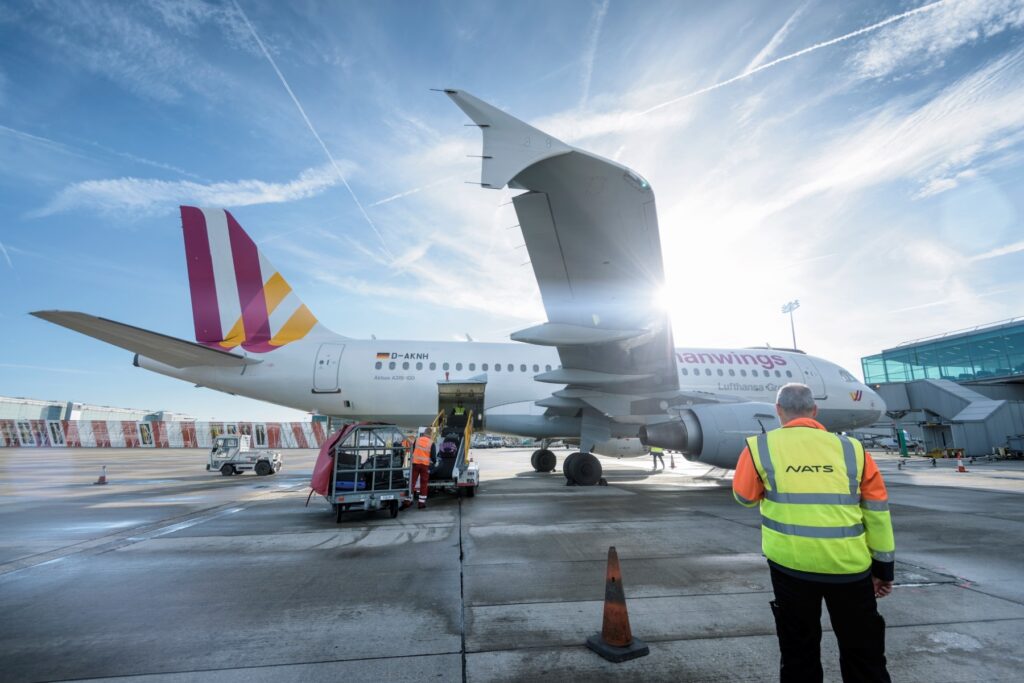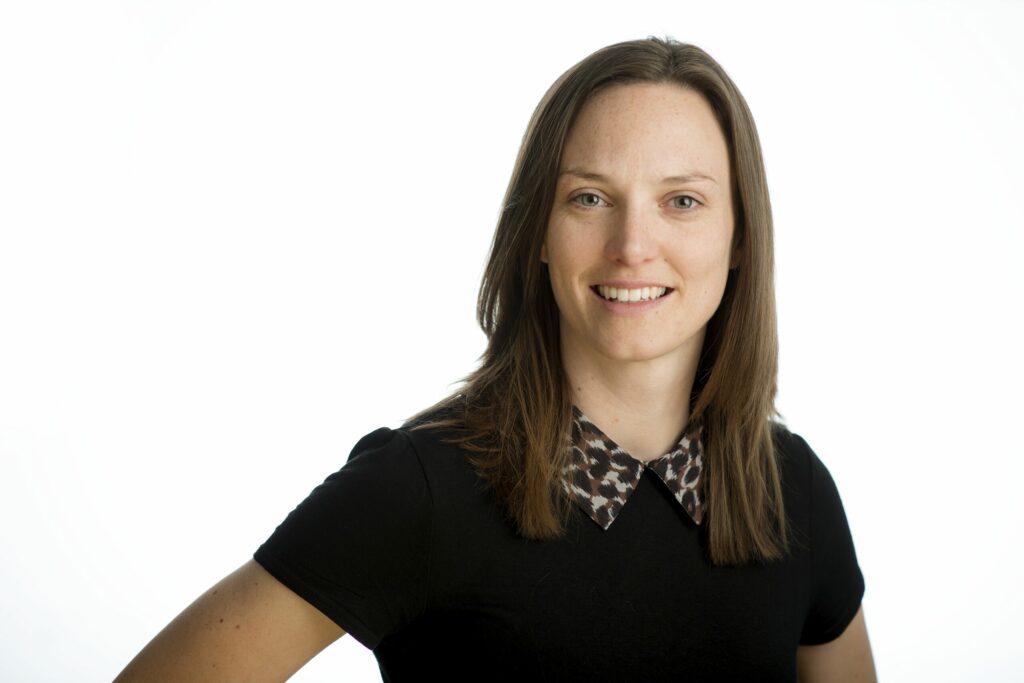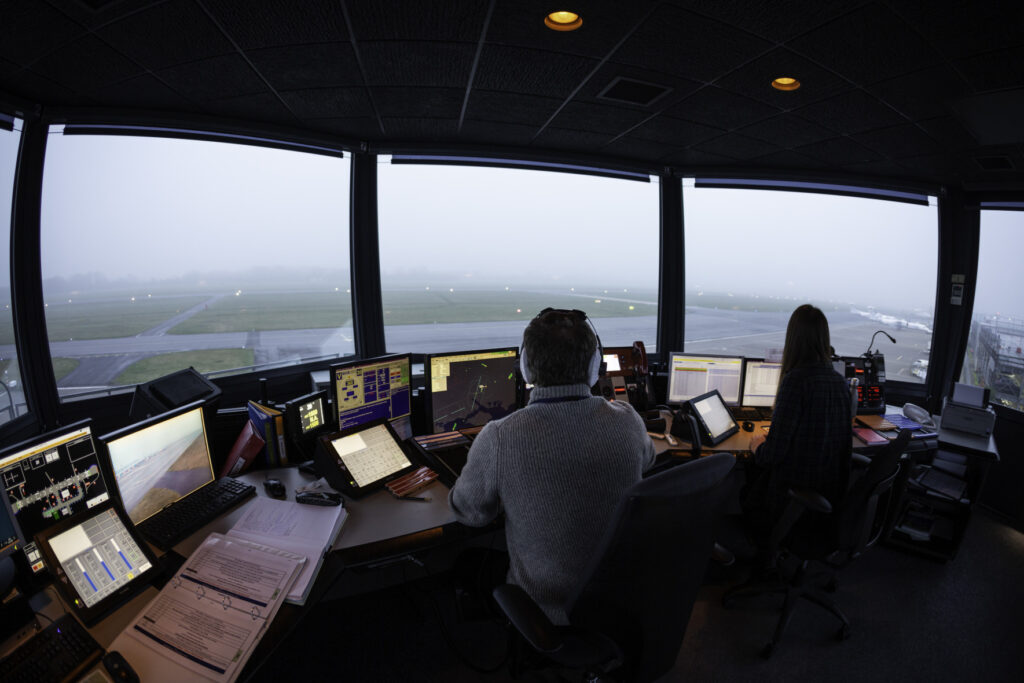
The aviation industry hasn’t exactly been flying high over the past two years. In 2020, industry revenues totalled $328 billion, around 40% of the previous year’s, according to McKinsey. That’s the same as in 2000. Moreover, although the sector is slowly recovering, it is still at 60% of the air traffic levels of 2019, and the company does not expect traffic to return to 2019 levels before 2024.
For some, this might sound like the start of the decline of the industry. Instead, aviation has set its sights on reaching new digital heights.
New technologies are allowing air control systems to be smarter and aircraft to become lighter, quieter and more efficient. The promise of robotics, artificial intelligence, the Internet of Things and unmanned aircraft systems will make the future of the industry unrecognisable from what it looks like now.
“It is an exciting time because it gives us this huge opportunity to build back better,” says Louisa Smith. Once a military air traffic controller, she is now the Head of Research and Development at NATS – formerly the UK’s National Air Traffic Control Services – where she leads the team that is building the world’s first AI air traffic control system. The goal? Faster, easier and more sustainable air travel.
“We’re expecting traffic to increase quite significantly by 2030,” she says. “So whilst we’ve had this kind of lowland and slow recovery, we’re still anticipating in 10-15 years for there to be more aircraft operating in the skies. Plus, we’ve got these new airspace users – electric and autonomous aircraft – which will cause some more complexity to how we manage the airspace, and therefore, we want to know what technology can support us to ensure that we maintain those safety standards that we have at the moment.”

Automation for the aviation industry offers huge opportunities. It could help the industry become more flexible and agile and, as Smith mentions, it is already opening the skies to new airspace users like drones and robotaxis. But it isn’t without its challenges.
Safety concerns are an absolute priority when it comes to automating any aspect of flying, from the workings of the plane down to the air control systems. In addition, air control is an activity that requires a high level of ambiguity and very quick decision-making. Although machines are very good at the latter, they often struggle with the former. But, when you are talking about flying, there is no room for error. It needs to be correct 100% of the time.
Therefore, the question remains: is it possible to fully automate the aviation industry? According to Smith, we don’t know just yet.
“The goal of our research is to really answer that question,” she says. “There is a kind of nervousness I can see around robots taking over the world and things like that. But actually, we already have a lot of automation in our operations room already. The controllers use tools and systems to help them in their controlling every day; so we do have a huge amount of experience in implementing tools and systems to support the controller.
“So it’s really about: How can the technology enhance what the controller can do to ensure that we keep the safety performance, the capacity, and actually the general public don’t see any of that, and they just get on their flights, and they don’t have any interruptions, or delays? This is about making sure that we lower the environmental impact of aviation in the future and that the end-user doesn’t really see what goes on behind the scenes so they can have a seamless flight.”
Moreover, despite the obvious comparisons that are often drawn between the automation of the aviation sector with the development of driverless cars, the two are widely different in regards to their safety procedures.
“There is a kind of nervousness I can see around robots taking over the world and things like that. But actually, we already have a lot of automation in our operations room already”
The aviation industry has much stricter safety criteria, and with good reason: the risk is much higher. Nonetheless, as a result, approximately 27,000 people are killed or seriously injured in car-related accidents every year in the UK alone – the same number of people it would take to fill 180 Airbus A320s. In contrast, in 2019, across the world, there were about 257 commercial aviation fatalities.
“While there is a lot we can learn from them, there are more complexities to what we do,” Smith says. “Obviously, people can’t just stop and get out of a plane. So there’s a real challenge around: What can the technology do better than the human? And what can humans do better than technology? So it’s quite an interesting challenge for everyone to be working on.”
A key to this question is NATS’ partnership with the Alan Turing Institute. The collaboration, called Project Bluebird, is working to develop the world’s first AI air traffic control system. The government-funded five-year project will utilise digital twin and machine learning technologies to develop innovative air control systems and promote the safe and trustworthy use of AI.
“What we’re trying to achieve is to have an airspace where an AI, an agent, as we call it, is controlling some airspace alongside the controller,” Smith says. “Something that we’re very proud of is we don’t have a lot of data about incidences when it doesn’t work particularly well, which is really great that we don’t have that data. But we need to be able to simulate that data in a very realistic way. So a digital twin will help us do that.”
The two organisations have been working together since 2018, applying data science to the complex airspace in the UK and looking at the ethics behind the use of this technology for air traffic management. At the moment, Project Bluebird is still in the research phase, but both NATS and Alan Turing Institute feel very encouraged about its possibilities.

Possibilities of Aviation Automation
“Here at the Turing we are excited to build on our excellent foundational collaboration with NATS, moving from proof of concept and scaling our work to more ambitious targets,” says Dr Evelina Gabasova, a Principal Research Data Scientist at the Alan Turing Institute. “We are working together to bring research around probabilistic digital twins to life, improving how we learn from data and design sustainable airspace, while also looking at ethical challenges of using AI in air traffic management. This way we can better plan for the future – modelling the impact on future air traffic and evolving scenarios, which will be critical to resilience and recovery.”
The collaboration pulled in a diverse mix of world-leading interdisciplinary scientists, including Turing AI fellows, computer scientists, mathematicians, statisticians, engineers and computational ethics, to create a team that would address the problem holistically. Moreover, all these experts are working hand-in-hand with controllers and some of the researchers even went through the early stages of NATS’ air traffic training course, that air controllers take when they join the organisation. The goal of this is to ensure that they design systems that are tailored to controllers’ needs.
But the project also wants to be open to the public. Recently, the organisations put together a virtual research collaboration conference, where experts from all of these fields shared their insights and expertise regarding the future of the industry.
“That’s a great way to work with people across a hugely diverse background to enhance what we’re doing as well, so working with them directly is really great,” Smith says. “And with the Alan Turing Institute, it sounds a bit cliché, but it is very much one team and everyone works together. And I think that’s why we were successful at getting the funding because it was one team working very collaboratively on it.”
“There's a real challenge around: What can the technology do better than the human? And what can humans do better than technology?”
Project Bluebird will allow for the creation of faster and more efficient air travel, but Smith and Gabasova also believe that these technological advances could be fundamental beyond flying, having the potential to make a difference to the UK’s path to reaching net zero.
To achieve this goal, NATS is involved in FlyZero, a project that aims to realise the vision of zero-emissions commercial flight by the end of the decade. Recently, the team was able to showcase a plane that flew from London to Glasgow with 60% less CO2 emissions than 10 years prior. Moreover, another easy way to reduce the environmental impact of flying has nothing to do with the design of planes themselves, but with making routes more efficient and saving fuel.
“When you fly into an airport you might have to go round and round before you land,” Smith says. “We’re trying to eliminate that hole by maybe slowing down an aircraft on their flight so they burn less fuel and when they arrive they can land straight away. Or there are other concepts that we’re looking at, far in the future, where maybe aircraft can fly behind each other in the slipstream like they do in cycling. If we could do that for airlines then that might save fuel for one of the aircraft. The military does it all the time.
“There’s a huge amount that can be done. But it has to be industry-wide, you can’t just do something on its own. So we work on European projects to enhance those types of things. Because you don’t want to just have a very efficient flight over the UK, and then get delayed in another zone. So actually, we work very collaboratively with our European partners, because we’re trying to make it very holistic and prioritising and focusing on the environmental benefit.”
Despite the many challenges, the future of the aviation industry looks as exciting as ever. In a matter of decades, the sky will be crowded with all types of vehicles, from drones to flying cars and driverless planes. But for this picture to be materialised in the years to come, the technologies that will enable it and ensure that these vehicles are safe and sustainable need to be developed now. After all, change won’t come out of thin air.


